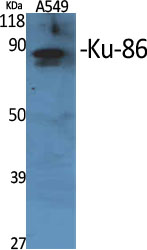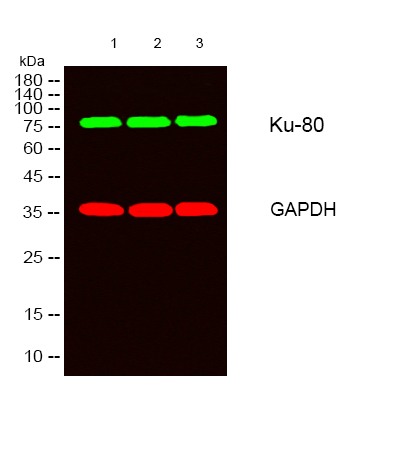NACA (Phospho Thr159) rabbit pAb
- Catalog No.:YP1786
- Applications:WB
- Reactivity:Human;Mouse;Rat
- Target:
- NACA
- Fields:
- >>Parathyroid hormone synthesis, secretion and action
- Gene Name:
- NACA HSD48
- Protein Name:
- NACA (Phospho-Thr159)
- Human Gene Id:
- 4666
- Human Swiss Prot No:
- Q13765
- Mouse Gene Id:
- 17938
- Mouse Swiss Prot No:
- Q60817
- Immunogen:
- Synthesized peptide derived from human NACA (Phospho-Thr159)
- Specificity:
- This antibody detects endogenous levels of NACA (Phospho-Thr159) at Human, Mouse,Rat
- Formulation:
- Liquid in PBS containing 50% glycerol, 0.5% BSA and 0.02% sodium azide.
- Source:
- Polyclonal, Rabbit,IgG
- Dilution:
- WB 1:500-2000
- Purification:
- The antibody was affinity-purified from rabbit serum by affinity-chromatography using specific immunogen.
- Concentration:
- 1 mg/ml
- Storage Stability:
- -15°C to -25°C/1 year(Do not lower than -25°C)
- Other Name:
- Nascent polypeptide-associated complex subunit alpha (NAC-alpha) (Alpha-NAC) (allergen Hom s 2)
- Observed Band(KD):
- 23kD
- Background:
- This gene encodes a protein that associates with basic transcription factor 3 (BTF3) to form the nascent polypeptide-associated complex (NAC). This complex binds to nascent proteins that lack a signal peptide motif as they emerge from the ribosome, blocking interaction with the signal recognition particle (SRP) and preventing mistranslocation to the endoplasmic reticulum. This protein is an IgE autoantigen in atopic dermatitis patients. Alternative splicing results in multiple transcript variants, but the full length nature of some of these variants, including those encoding very large proteins, has not been determined. There are multiple pseudogenes of this gene on different chromosomes. [provided by RefSeq, Feb 2016],
- Function:
- allergen:Causes an allergic reaction in human. Binds to IgE from atopic dermatitis (AD) patients. Identified as an IgE autoantigen in atopic dermatitis (AD) patients with severe skin manifestations.,function:Prevents inappropriate targeting of non-secretory polypeptides to the endoplasmic reticulum (ER). Binds to nascent polypeptide chains as they emerge from the ribosome and blocks their interaction with the signal recognition particle (SRP), which normally targets nascent secretory peptides to the ER. Also reduces the inherent affinity of ribosomes for protein translocation sites in the ER membrane (M sites). May act as a specific coactivator for JUN, binding to DNA and stabilizing the interaction of JUN homodimers with target gene promoters.,PTM:Phosphorylation of Ser-43 by ILK during cell adhesion may promote nuclear localization. Phosphorylation of Thr-159 by GSK3B may promote prote
- Subcellular Location:
- Cytoplasm . Nucleus . The heterodimer is located mainly in the cytosol, and the homodimer in the nucleus. .
- Expression:
- Ubiquitously expressed.
- June 19-2018
- WESTERN IMMUNOBLOTTING PROTOCOL
- June 19-2018
- IMMUNOHISTOCHEMISTRY-PARAFFIN PROTOCOL
- June 19-2018
- IMMUNOFLUORESCENCE PROTOCOL
- September 08-2020
- FLOW-CYTOMEYRT-PROTOCOL
- May 20-2022
- Cell-Based ELISA│解您多样本WB检测之困扰
- July 13-2018
- CELL-BASED-ELISA-PROTOCOL-FOR-ACETYL-PROTEIN
- July 13-2018
- CELL-BASED-ELISA-PROTOCOL-FOR-PHOSPHO-PROTEIN
- July 13-2018
- Antibody-FAQs

